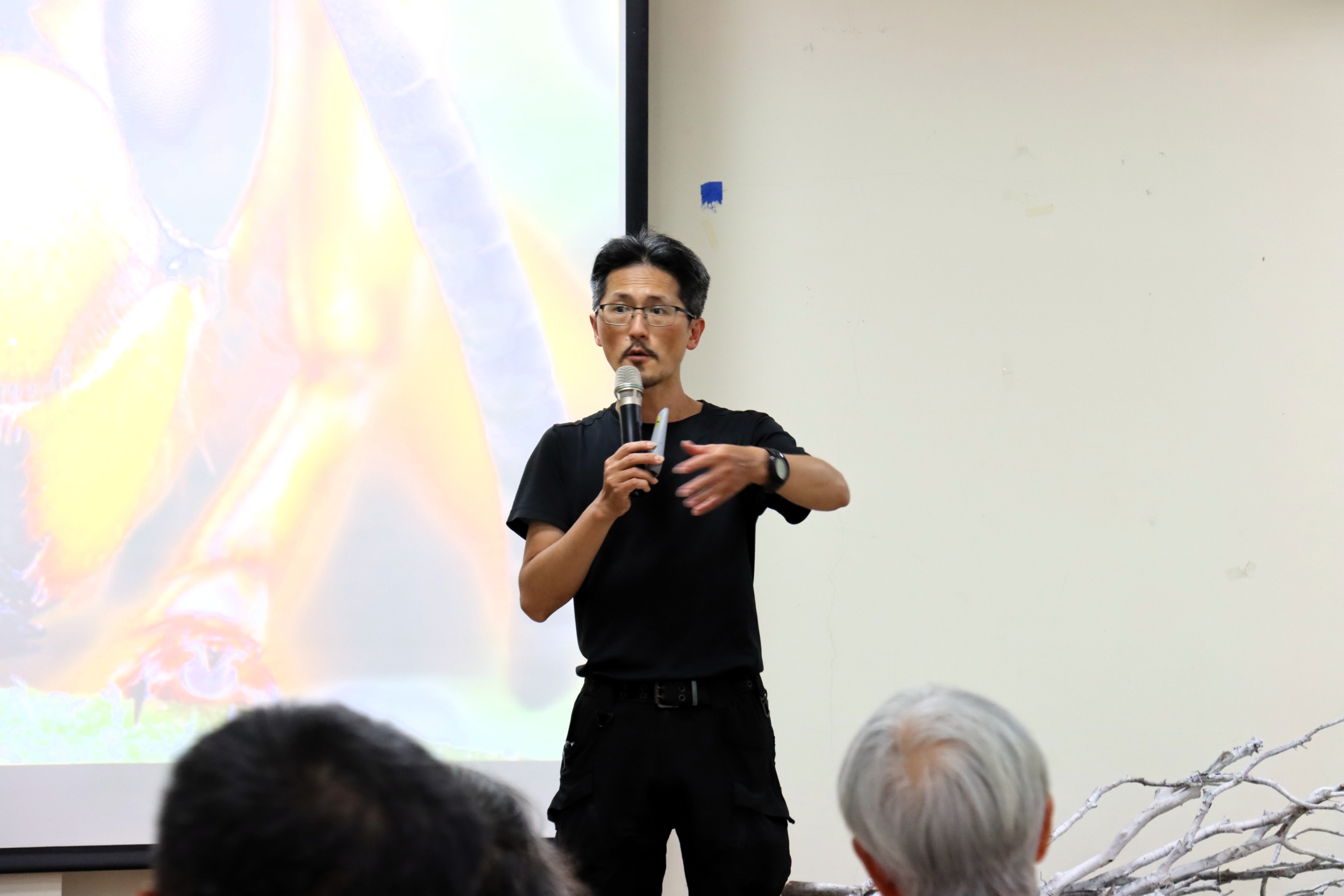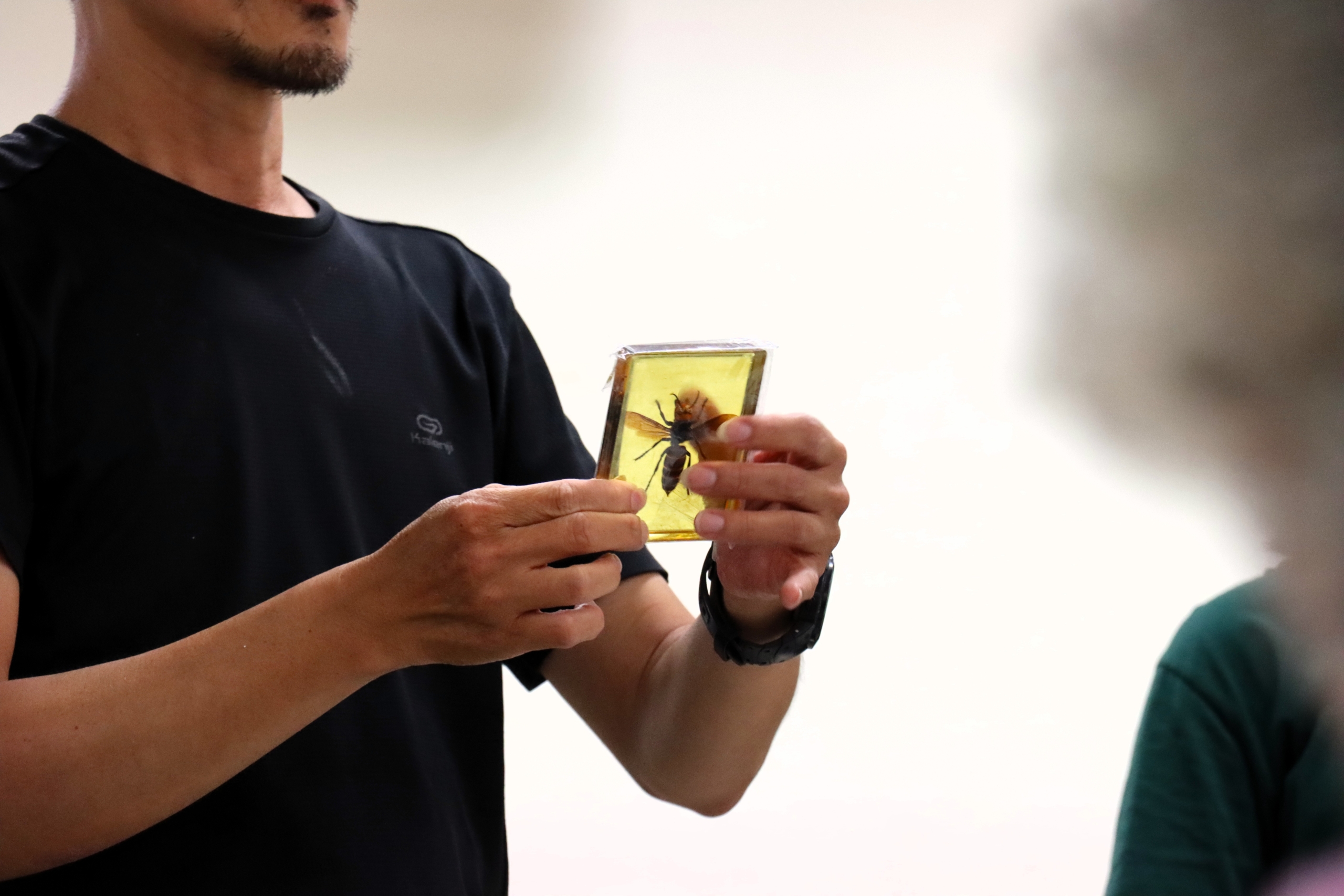On a quiet afternoon at the Yisheng Village Community Center, a few plastic chairs were simply arranged as sunlight streamed earnestly through the windows. A baby dozed half-awake on a grandmother’s back, while several elderly attendees sat quietly, glass cupping jars on their shoulders, listening intently. This was no ordinary afternoon gathering—it was a training session on hornet awareness and prevention. For residents who live close to nature and depend on the land for a living, this was crucial knowledge.
The session was led by the charismatic “Monster Teacher,” an expert in bee behavior. After a brief welcome from the village chief, the teacher quickly built rapport with the attendees. Amid laughter and curiosity, the session began with a detailed explanation of bee and hornet stings. A sting on the back or thigh may only result in mild swelling, the teacher explained, but stings on delicate areas like the face or fingers—rich in blood vessels—can lead to severe reactions. One auntie shared her experience: within half an hour of being stung, she felt a choking sensation that made it difficult to breathe.
The teacher then delved into the characteristics of different species. Paper wasps are generally timid—more so than honeybees—and often lose fights against hornets or even ants. Hornets, however, are a different story. As larvae, they feed on meat; as adults, they switch to nectar. Despite this dietary change, their aggressive instincts remain. When sensing danger, they target the human head—especially the eyes and mouth. These areas are sensitive and nerve-rich, and stings here can cause severe allergic reactions or even shock.
Hornet nests are typically spherical, with a papery texture made from chewed-up bark. Most are built underground. If you come across a patch of barren ground with a small, smooth hole, it may well be a nest entrance. Hornets returning home dive like airplanes, generating heat that scorches the grass. Some nests lie hidden like landmines beneath grassy fields—step on one, and a swarm may erupt like a thunderclap.
Hornets are fiercely territorial and highly reactive. When a person is stung, their body releases alarm pheromones that signal the swarm to attack. As long as you’re within their line of sight, you’re a target. Their most active period is during calm, typhoon-free weather. Wearing dark or furry clothing increases the risk, as hornets may mistake you for a predator.
When encountering a hornet nest, calling the fire department is common practice. However, using water jets or fire can agitate the swarm. Damaging the nest with water won’t kill all the hornets—many will linger and attack anyone nearby for days. Burning the nest can drive out the entire colony, creating chaos. The only truly safe method is complete and professional removal in one attempt.
A particularly poignant story was also shared: during a hornet attack, a teacher instructed her students to lie flat and waved her clothing to draw the hornets’ attention. Tragically, this provoked the swarm, leading to serious injuries. The correct response, the speaker emphasized, is to move away quickly—never attempt to fight or wave them off. As a final tip, the teacher noted that honeybees tend to fly in neat formations, whereas hornets fly erratically—an important clue for identification.
By the end of the session, the baby was sound asleep, and the cupping elders slowly rose from their chairs. Some took photos of the presentation slides, others recorded the session to share with loved ones. Though modest in scale, the lecture served as a quiet umbrella on a rainy afternoon—shielding the community from an invisible but very real danger.
Written by Chang, Tzu-Yi
Edited by Li, Ruo-Jia
Photos by Chang, Tzu-Yi






